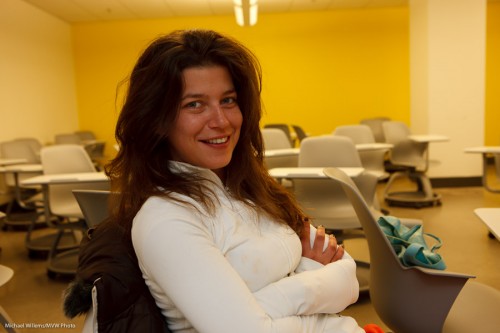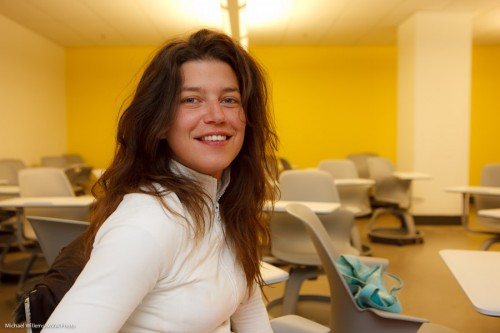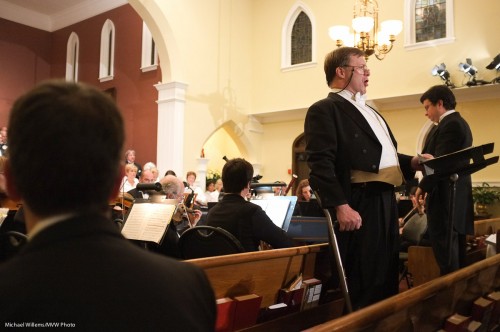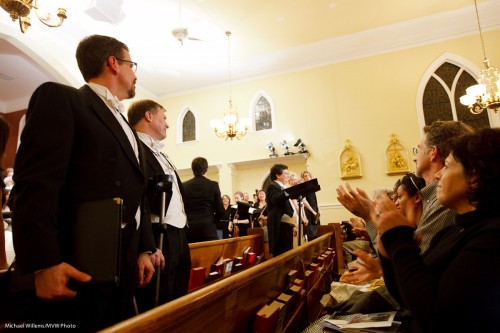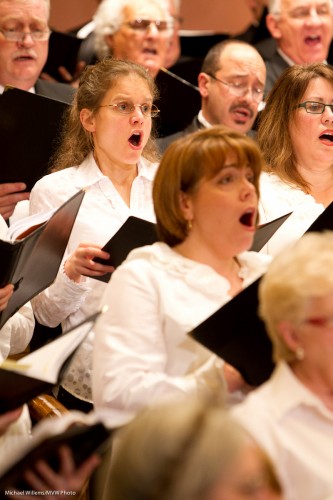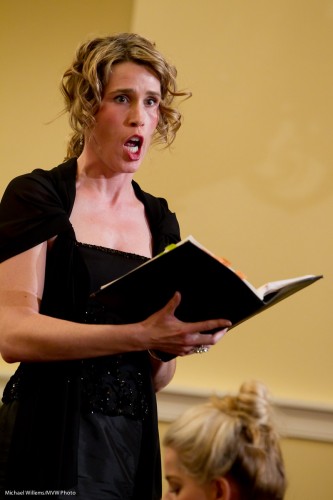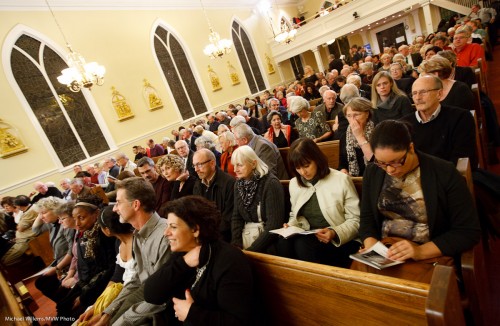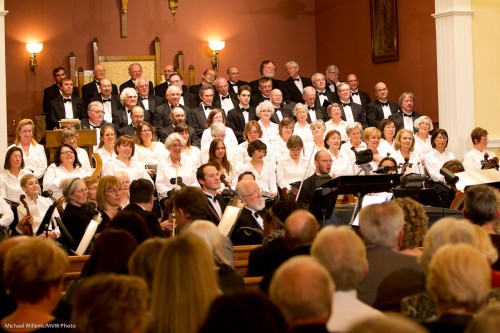I don’t make those, right?
Of course I do – but then I fix them.
At a recent talk at Seneca College I shot my “assistant-for-the-evening” Kim in a test shot, using the usual settings (ISO 400, 1/40th sec, f/4; and the flash on TTL, aimed 45 degrees behind me):
Uh oh, too dark. What?
Oh. (Hits forehead)! White or yellow bright walls, a white top: TTL metering will of course get this wrong and will underexpose (just like ambient metering would).
So let’s set FEC (flash exposure compensation) to +1 stop and let’s try that again:
That’s a lot better! (And then you can fine-tune from there). Notice how the ambient is the same (background), but the flashed part of the picture (her) is now brighter.
Often, when people say “TTL flash metering is unpredictable” they mean “I haven’t quite thought it through”, and this was such a case. Problem solved, and I should have done this even before the first test shot – but then, that is why you take test shots!
Interested in lighting? Consider some private coaching, where I explain all, you get to practice and take actual shots, and all will become clear. The December/January special is still on: 10% off during those months.

